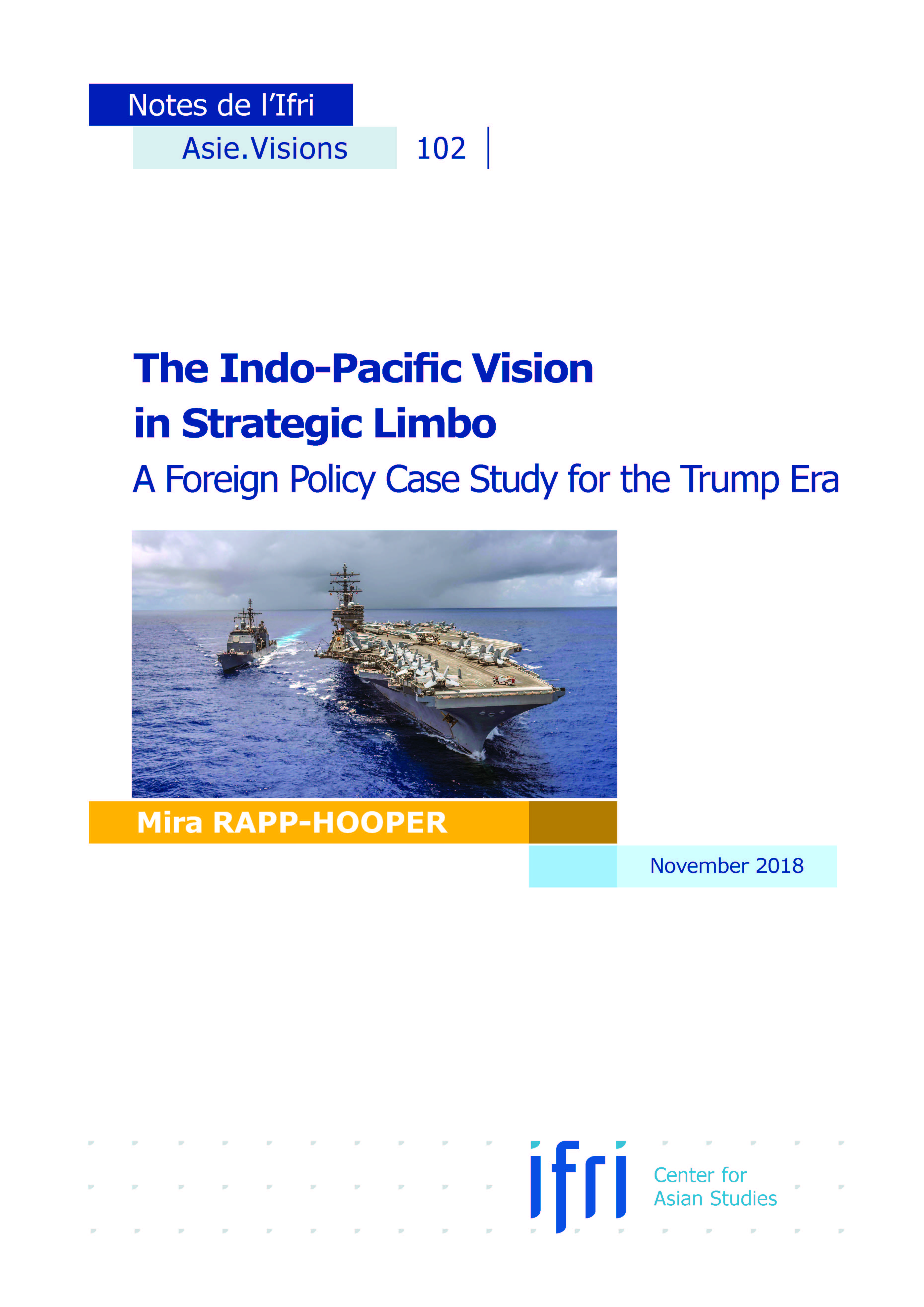The Indo-Pacific Vision in Strategic Limbo: A Foreign Policy Case Study for the Trump Era

The Trump Administration’s Indo-Pacific security strategy is a case study in foreign policymaking under a non-unitary executive.
Having identified competition with China as a leading national security priority in its early months, disposed of the Obama Administration’s Rebalance to Asia, and begun the process of defining its ‘free and open Indo-Pacific’ approach, the administration has made little subsequent progress towards developing it into a concrete strategy. While some modest efforts have been made to develop policy at the working level, the President himself has pursued a much narrower China approach, focused almost exclusively on punitive trade measures and North Korea. Moreover, the basic principles that motivate Indo-Pacific concept are clearly at odds with the President’s own instincts. As a result, two largely independent streams of China policy have emerged and are highly unlikely to be rationalized in the next two years.
This current disjuncture does not, however, doom the Indo-Pacific security strategy to history’s dustbin. Whether or not the moniker persists, the basic contours of the approach are likely to be adopted by a new administration and are largely consistent with broader U.S. objectives in the region. Far beyond the White House, a consensus has emerged in Washington that the United States and China will be increasingly competitive, and that a holistic American strategy is necessary. Any future strategy is likely to rely on allies and partners, emphasize democracies, seek to secure the First Island Chain and maritime Asia, and have ample room for participation by European partners. There will, however, remain many hurdles to full and successful implementation, including perennial American over-optimism about regional states’ alignment decisions and ability to commit resources, as well as the profound distrust that is likely to enshroud U.S. strategic leadership after Trump. Nonetheless, American allies and partners may think of the Indo-Pacific approach as one whose time is still likely to come; they should seek to develop it themselves until the United States is capable of resuming some form of regional leadership.
Download the full analysis
This page contains only a summary of our work. If you would like to have access to all the information from our research on the subject, you can download the full version in PDF format.
The Indo-Pacific Vision in Strategic Limbo: A Foreign Policy Case Study for the Trump Era
Related centers and programs
Discover our other research centers and programsFind out more
Discover all our analyses
RAMSES 2024. A World to Be Remade
For its 42nd edition, RAMSES 2024 identifies three major challenges for 2024.
France and the Philippines should anchor their maritime partnership
With shared interests in promoting international law and sustainable development, France and the Philippines should strengthen their maritime cooperation in the Indo-Pacific. Through bilateral agreements, expanded joint exercises and the exchange of best practices, both nations can enhance maritime domain awareness, counter security threats and develop blue economy initiatives. This deeper collaboration would reinforce stability and environmental stewardship across the region.

The China-led AIIB, a geopolitical tool?
The establishment of the Asian Infrastructure Investment Bank (AIIB) in 2016, on a Chinese initiative, constituted an attempt to bridge the gap in infrastructure financing in Asia. However, it was also perceived in the West as a potential vehicle for China’s geostrategic agendas, fueling the suspicion that the institution might compete rather than align with existing multilateral development banks (MDBs) and impose its own standards.
Jammu and Kashmir in the Aftermath of August 2019
The abrogation of Article 370, which granted special status to the state of Jammu and Kashmir (J&K), has been on the agenda of the Bharatiya Janata Party (BJP) for many decades.






